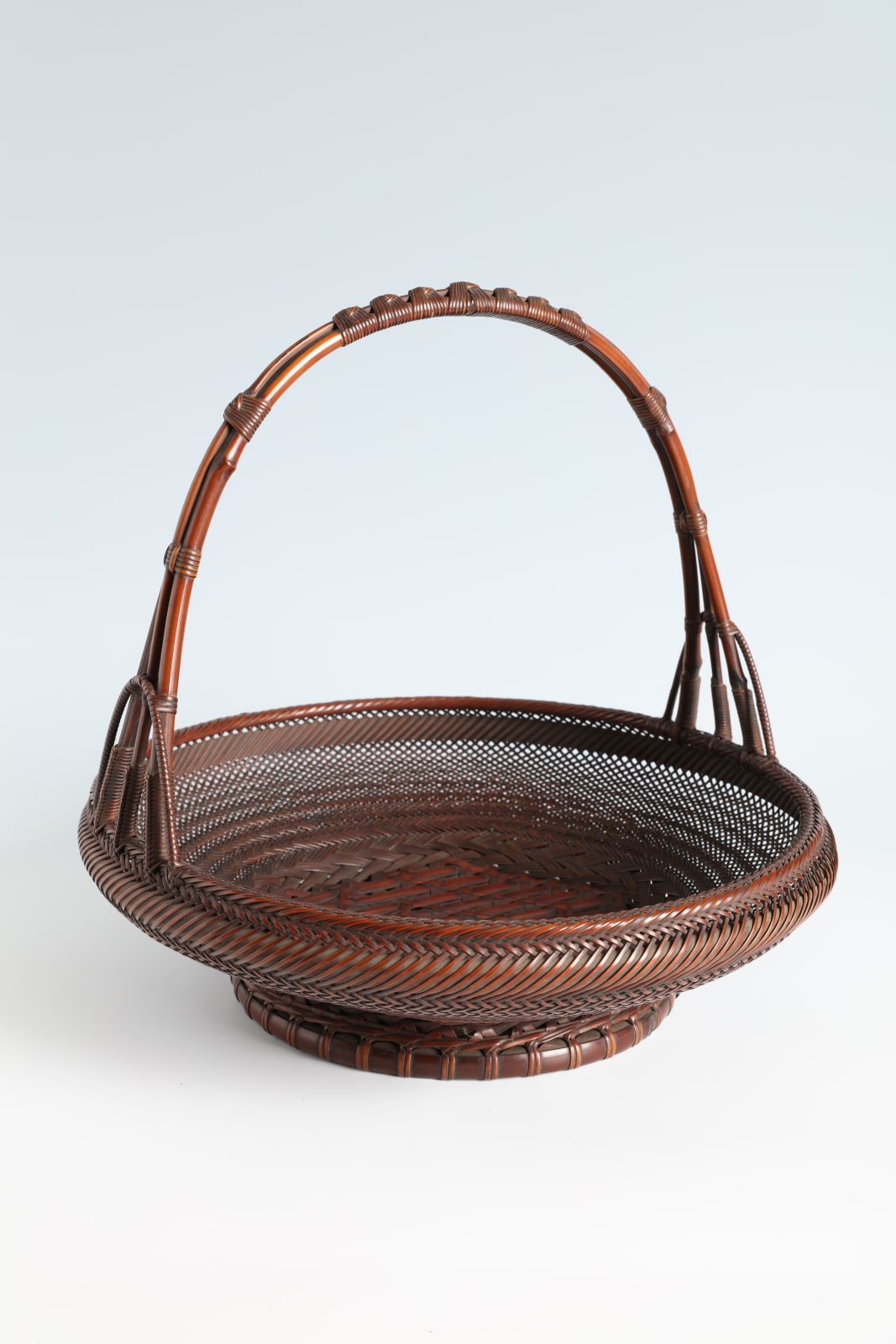Maeda Chikubosai I
Round Flower Basket in Chinese Style, 1930s
Bamboo and rattan
Size 14 x 15 x 15 in. (35.5 x 38 x 38 cm)
T-4111
Chikubōsai made this basket with madake bamboo and rattan, using the techniques of bundled plaiting, twill plaiting, bending, wrapping, and knotting. Incised signature on the bottom reads Chikubōsai made this....
Chikubōsai made this basket with madake bamboo and rattan, using the techniques of bundled plaiting, twill plaiting, bending, wrapping, and knotting. Incised signature on the bottom reads Chikubōsai made this. The basket comes with a copper liner for ikebana use and a fitted kiri-wood storage box.
This style of flower basket appears to have been pioneered by Chikubōsai’s contemporary Tanabe Chikuunsai (1877–1937) who based his design, in turn, on miniature versions made by Hayakawa Shōkosai I (1815–1897), one of the pioneers of art basketry in western Japan. Such baskets are sometimes referred to as fruit baskets, but in this case the presence of a waterproof copper liner suggests that the basket was intended for a flower arrangement. The use of tabane-ami (bundled-plaiting), a technique pioneered by the great avant-garde bamboo artist Iizuka Rōkansai (1890–1958) in the mid-1930s, indicates that the present basket is a masterpiece made late in Chikubōsai’s career.
This style of flower basket appears to have been pioneered by Chikubōsai’s contemporary Tanabe Chikuunsai (1877–1937) who based his design, in turn, on miniature versions made by Hayakawa Shōkosai I (1815–1897), one of the pioneers of art basketry in western Japan. Such baskets are sometimes referred to as fruit baskets, but in this case the presence of a waterproof copper liner suggests that the basket was intended for a flower arrangement. The use of tabane-ami (bundled-plaiting), a technique pioneered by the great avant-garde bamboo artist Iizuka Rōkansai (1890–1958) in the mid-1930s, indicates that the present basket is a masterpiece made late in Chikubōsai’s career.
Exhibitions
TEFAF 2016
